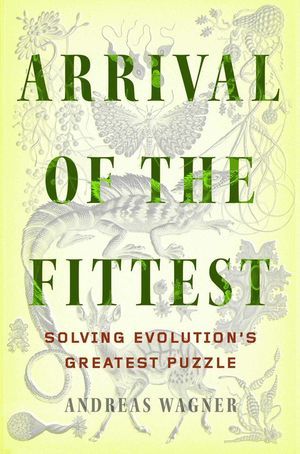
Environment
How Did Nature Create Involved Human Fathers?
Beyond the Modern Synthesis: computational biology and a key role for phenotypes
Posted December 4, 2014

"Arrival of the Fittest" has arrived. And it's an excellent evolutionary read.
We take it for granted that human fathers regularly invest in their children, but we are among a minority of mammals who do so. How did nature create involved human fathers? Were they honed by a higher power from interstellar dust? Were they the result of one’s favored story of human origins recounted in, say, Joseph Campbell’s “The Hero with a Thousand Faces”? Were they the product of a random Pleistocene mutation that yielded a new brand of man preferred by females?
If we drew from the so-called “Modern Synthesis” of the 1930s in biology, we would imagine a scenario by which chance mutations created novel paternal phenotypes on which selection acted. We would quantitatively track how the gene frequencies underlying these phenotypes change over time in populations. We would marvel at the recognition that this view of genes also solved Darwin’s riddle over the central unit of inheritance. However, this view also leaves much to be fleshed out.
In a new book, “Arrival of the Fittest: Solving Evolution’s Greatest Puzzle,” evolutionary biologist Andreas Wagner of the University of Zurich and Santa Fe Institute attempts to unpack the origins of life’s innovativeness. While Wagner does not discuss the evolution of human fatherhood, he lucidly describes evolutionary processes that could inform this very discussion. Wagner quotes geneticist Hugo de Vries: that “natural selection may explain the survival of the fittest, but it cannot explain the arrival of the fittest.” In this vein, it’s not enough to reference chance mutation, but to draw upon recent findings in evolutionary-developmental biology (“evo-devo”) and computational biology, giving direct attention to the phenotype, in an attempt to discern general rules of evolutionary innovativeness (such as how involved fathers are made).
Wagner’s book discusses metabolic, protein and regulatory network “libraries”—how changes in them arise and can be selected, in turn giving rise to the properties of life. There are multiple genetic and gene regulatory pathways to similar phenotypes, adaptive “robustness” is built into metabolic systems, and genetic “knockout” experiments indicate how genetic regulatory systems are often redundant. Work in the last two decades has helped reveal the mechanisms underlying how animal body plans and limbs develop, and are subject to evolutionary tinkering over longer time frames. When humans created a novel compound—pentachlrophenol—in the 1930s, bacteria quickly evolved to exploit it, just as in the wild several different “antifreeze” compounds evolved independently in fish (including in the Arctic and Antarctic waters) to help them avoid freezing.
Wagner’s book points to the importance of the importance of processes giving rise to phenotypes on which selection acts. This is a more sophisticated approach than the stale “a random mutation arises upon which selection acts” simplification. But there are also processes missing here that arguably are central to understanding the evolution of human fatherhood, as well as other key changes in our social behavior within the past few million years. Consider developmental plasticity and the Baldwin effect, as examples.
James Mark Baldwin, after whom the “Baldwin effect” is named, was a philosopher and psychologist. Partly inspired by observations of his daughters, he felt that an understanding of psychology entailed recognition of both phylogeny (evolutionary history) and ontogeny (development). He saw the dynamic ways his and other children encountered and were shaped by the world as part of what made them. As individuals adapt to the world in which they live, the changes they undergo may initially lack a heritable basis, but over time may become genetically assimilated. Put another way, developmental plasticity is the process enabling individuals to adapt to environmental changes, and later the basis of that change may become inherited, possibly with an underlying genetic basis.
Why does this matter? Human fatherhood is a mosaic of traits rather than a single thing, and it was a mosaic crafted at different times in the past under different contexts. For each aspect of derived fathering, does one imagine that the process began with a chance mutation giving rise to an advantageous phenotype? Or does one envision human plasticity leading the way, followed by a heritable basis for it? I’ll take the latter view, writ large, as a better model for how to think of the evolution of human social behavior, including paternal care, within the past few million years. I’ll also echo the view of Baldwin and Andreas Wagner that we give the phenotype its proper due in any evolutionary process, including one leading to the descent of dads.
References
Cartwright, J. (2008). Evolution and human behavior: Darwinian perspectives on human nature. Cambridge: MIT Press.
Gray, P. B., & Crittenden, A. (2014). Father Darwin: Effects of children on men, viewed from an evolutionary perspective. Fathering, 12, 121-142.
Jablonka, E., & Lamb, M. E. (2005). Evolution in four dimensions: genetic, epigenetic, behavioral, and symbolic variation in the history of life. Cambridge: MIT Press.
Wagner, A. (2014). Arrival of the fittest: solving evolution’s greatest puzzle. New York: Current.

